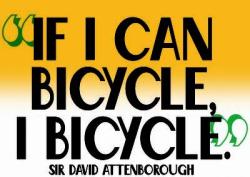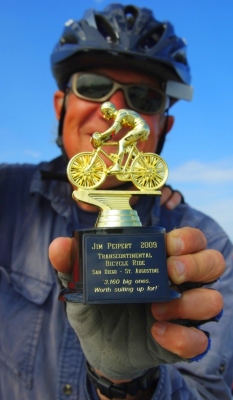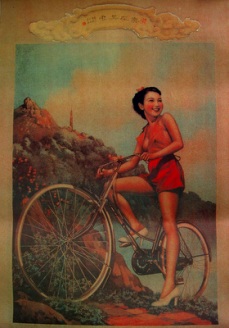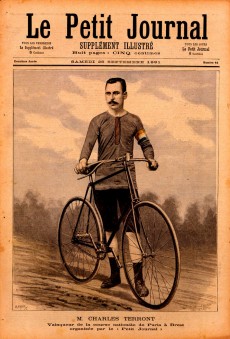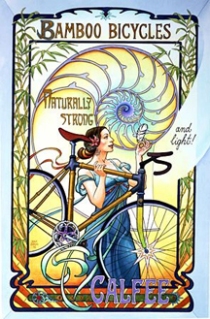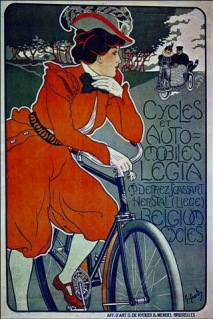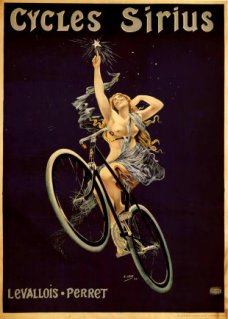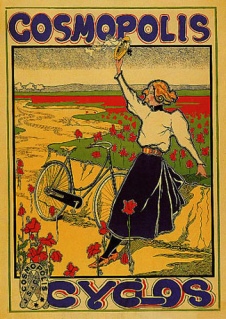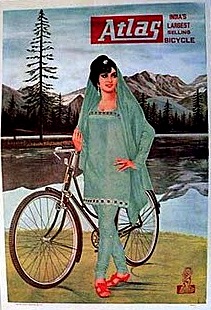“The city needs a car like a fish needs a bicycle.”
— Dean Kamen, inventor of the Segway
 It has some way to go before it’s a Portland, Boulder or even an Austin, but Fort Worth turned a big crank of the pedals Tuesday night toward its goal of becoming one of the most bicycle-friendly cities in America by 2015.
It has some way to go before it’s a Portland, Boulder or even an Austin, but Fort Worth turned a big crank of the pedals Tuesday night toward its goal of becoming one of the most bicycle-friendly cities in America by 2015.
In a chamber packed with cyclists, many of whom rode their bikes to City Hall on a frigid evening, the Fort Worth City Council unanimously approved the city’s “comprehensive bicycle transportation plan,” which aims to increase the number of bicycle trails, on-street lanes and signed bike routes from about 100 miles to nearly 1,000 miles.

Cyclists demonstrate their support for Fort Worth's comprehensive bike plan in the City Council chamber. Photo by Kevin Buchanan
The plan also proposes to triple the number of bike commuters and “attain official designation as a Bicycle Friendly Community through the
League of American Cyclists” within the next five years.
The city estimates that only about 0.2 percent of Fort Worth’s 720,000 residents currently ride their bikes to work. That’s a figure in the hundreds, rather than thousands.

By comparison, in Austin, the state’s most active bike-commuting city, about 1 percent of the population commutes to work by bicycle. Home of Lance Armstrong and the main campus of the University of Texas, Austin is the only Texas city designated as a Bicycle Friendly Community by the League of American Cyclists.
Bernie Scheffler, Fort Worth cyclist, bike shop owner and activist, and Brad Blessing, architect and cycling advocate, were featured in a
report on the City Council action by the local CBS station, KTVT-TV/Channel 11. (To see the video report, go to KTVT-TV’s
video library and search for “Fort Worth cyclists.”) Scheffler and Blessing recently founded the group
Bike Friendly Fort Worth, which helped organize the ride to City Hall.
Local clubs, such as the
Fort Worth Bicycling Association and
LMRA Bicycle Club, also took part in the ride. Kyle Carr of the LMRA designed the yellow T-shirts, declaring “I Support BIKE Fort Worth,” that were worn by cyclists in the council chamber.

The Web site
FortWorthology, dedicated to such concepts as “smart growth,” “transit,” “bicycles” and “sustainability,” carried a
report on the City Council vote and the cyclists who rode to City Hall to demonstrate support for the plan, called “Bike Fort Worth.”
“
Bike Fort Worth calls for the expansion of the bike transportation network to nearly 1,000 miles, with 224.7 miles of off-street trails, the conversion of the 1.4 miles of bus lanes downtown into bus & bike lanes, 218.3 miles of on-street
sharrow [shared roadway] bike routes, and an incredible 480.3 miles of dedicated on-street bike lanes, with lanes to the city limits and dense webs in the urban core,” wrote Kevin Buchanan of FortWorthology.
“The plan even spells out the need for very progressive infrastructure where needed, including Bicycle Boulevards in residential neighborhoods, bike boxes, bike-only traffic signals (and signal recalibration for bike routes), contra-flow bike lanes for one-way streets, physically separated on-street cycle tracks, and more.”

A bike box in Portland, Ore.
The Huffington Post carried an item on Feb. 4 on how some cities around the world “have come up with creative and unique ways of trying to make biking a safer, more pleasant experience.” The post featured a nice selection photos of bike lanes in such cities as Munich, New York and Tokyo.
The estimated capital cost of the Bike Fort Worth plan over the next two to three decades is about $160 million. Some who are wedded to gasoline-powered vehicles might rather see this money spent on improving roads for motorists. But there could be an economic impact from making Fort Worth more bike-friendly that would benefit the city overall.
A new study by the Nelson Institute for Environmental Studies at the University of Wisconsin at Madison says that bicycling generates more than a $1.5 billion annual economic impact in Wisconsin, exceeding the impact of even the deer hunting industry.

Arlie Robinson
To increase the economic impact of cycling, the Nelson Institute made these recommendations: accelerate investment and development of bicycle routes, lanes and paths throughout the state for safety and convenience; encourage people to replace short automobile trips with bicycling trips; and develop a culture of bicycling for recreation and transportation, especially among the younger generation.”
That sounds a lot like what Fort Worth is doing.
(See two previous blog posts on this topic: “
Making Cowtown more bike-friendly,” May 15, and “
Arlie Robinson: Pioneer bike commuter,” Aug. 17.)
 I’m a big fan of Brooks English-made leather bicycle saddles, manufactured in pretty much the same way in the British West Midlands since the company was founded in 1866.
I’m a big fan of Brooks English-made leather bicycle saddles, manufactured in pretty much the same way in the British West Midlands since the company was founded in 1866. “He headed for Birmingham, where in 1866 he established a business in horse harnesses and general leather goods in Great Charles Street under the name JB Brooks & Co. In 1878, the unfortunate death of Mr. Brooks’ horse led to a stroke of inspiration. Unable to afford another horse, he borrowed a bicycle in order to commute to work. But he found the seat so
“He headed for Birmingham, where in 1866 he established a business in horse harnesses and general leather goods in Great Charles Street under the name JB Brooks & Co. In 1878, the unfortunate death of Mr. Brooks’ horse led to a stroke of inspiration. Unable to afford another horse, he borrowed a bicycle in order to commute to work. But he found the seat so































